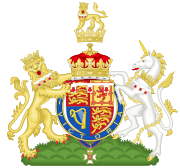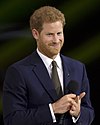| Earldom of Dumbarton | |
|---|---|
 Arms of Prince Harry, the present Earl of Dumbarton | |
| Creation date | 9 March 1675 [1] |
| Creation | Second |
| Created by | Elizabeth II |
| Peerage | Peerage of the United Kingdom |
| First holder | Lord George Douglas |
| Present holder | Prince Harry |
| Heir apparent | Prince Archie of Sussex |
| Remainder to | the 1st Earl's heirs male of the body lawfully begotten [2] |
| Status | Extant [3] |
Earl of Dumbarton is a title in the peerage of the United Kingdom, referring to Dumbarton in the area West Dunbartonshire, Scotland. The title has been created twice, once in the Peerage of Scotland in 1675 and once in the Peerage of the United Kingdom in 2018.


